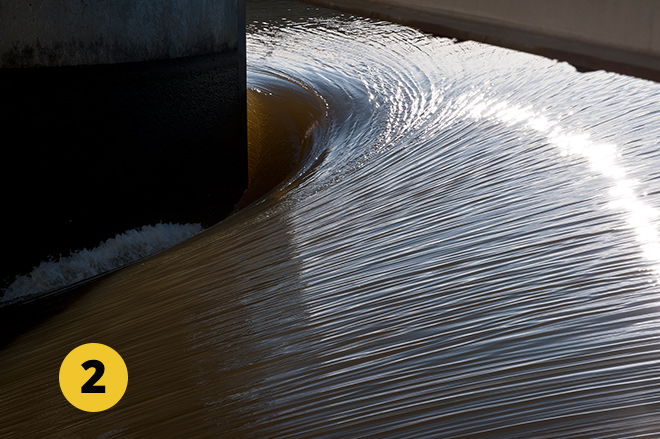Upstream, strong currents can form when you least expect it
Upstream, before a gate opens
When all the gates in a spillway are closed, the water upstream is calm.


A few seconds after a gate opens
After a gate opens, it takes only a few seconds for strong currents to form. Here’s a close-up of a strong current rushing into a spillway with an open gate. Nothing could stand against such a strong suction force. Never assume you could regain control of the situation if you’re caught in a whirlpool like this.
After going through the spillway gate, the water rushes down into the river, forming waves powerful enough to flip any kind of boat and drown even the most skilled of swimmers.

Downstream, strong currents can form and water levels can change when you least expect it
Downstream, before a gate opens
Downstream from the spillway, the water is perfectly calm. There may not even be any water at all. It may be tempting to venture out onto the dry riverbed. But, for several different reasons, a spillway gate may need to be opened to let out the overflow.


A few seconds after a gate opens
When a spillway gate opens, a huge amount of water can rush through and drag you under without any warning. The surging water can easily flip boats and drown even the most skilled of swimmers.

How to stay safe near spillways
Both upstream and downstream of a spillway:
- Keep your distance, and stay away! If a gate opens, you will not be able to make it back to safety in time.
- Obey all warning signs and never cross booms.